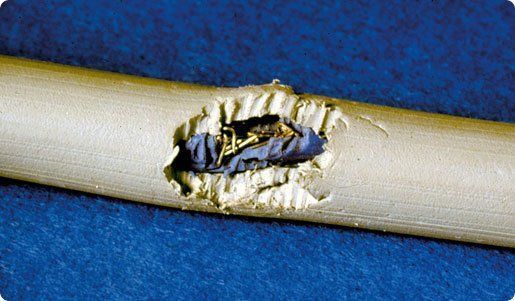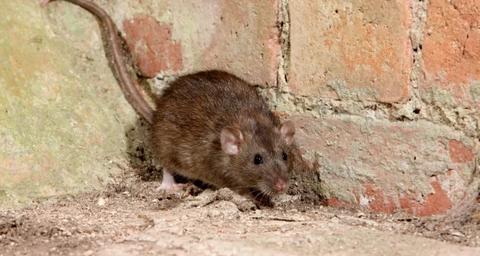
Risks of damage & disease from a rat infestation
MATERIAL AND GOODS DAMAGE CAUSED BY RATS
- Gnawing damage: rats have very hard teeth that they have to sharpen constantly to keep them short. They do this on a wide variety of materials such as concrete, aluminum, plastic, glass, thick electrical harnesses, wood, paper, cardboard, insulation, and more.
- Serious gnawing damage can have fatal consequences such as unsafe work situations, power failure, fire due to short circuit, broken appliances, machines or vehicles, production stops, holes in your roof or ventilation system, and more.
- Bad smell: urine gives off a strong ammonia smell that can also affect breathing.
- Smear marks (belly fat) on walls and material where they walk.
- Torn material and broken packaging: they easily tear any soft material to use it when building their nests. Stored food or products are damaged as a result and can no longer be sold to customers.
- Contamination of material and goods with rats feces and urine can cause huge financial loss.
- Damage to personal belongings: Rats can gnaw on personal belongings like clothing, upholstery, furniture, and books, causing damage and loss of property.

Health risks and diseases that rats transmit
- Rats are responsible for zoonoses, diseases that are transmitted from animals to humans. Some of them being salmonella, Weil's disease, e. Coli, tuberculosis, rabies, tapeworm, typhoid, trichinosis, etc.
- Rodents can transmit these diseases in a number of ways:
- by biting
- contamination of our food with faeces or urine
- by direct contact with faeces or urine
- indirectly via a dog, cat or blood-sucking insects
- indirectly through bathing in or drinking contaminated water
Rats are often also carriers of parasites or other pests such as fleas, mites and ticks that can also be annoying or dangerous for humans. They provoke itching, allergic reactions or can even cause Lyme disease.
How to prevent a rat infestation
There are some precautionary measures you can take to prevent rats getting into your home.
Seal any spaces between the ground and the façade and any holes on the walls with suitable material so rodents can’t chew their way in.
Don’t store food on the ground and always keep it in secure food containers. Even when throwing away food in a compost hill or in a garbage bin, you shouldn't do it too close to your home.
Risks for infrastructural systems and agricultural industry
- The less common types of rats such as voles and muskrats can destroy agricultural crops and undermine roadsides, dikes and canals. Due to their excavation work, these structures can silt up or break open.
- The underground tunnels dug by rats can cause instability or collapse in the case of large networks.
- Sewer and roof rats can also damage agricultural crops and their burrowing activities may impact drainage systems or irrigation infrastructure.
Other risks associated with the presence of rats
- Emotional distress: Many people are afraid of rats (rat phobia) and that feeling is reinforced as soon as rats are in close proximity. This can cause stress and insomnia.
- Shame: Most people are ashamed of the presence of rats in their home or neighborhood since they are often linked to poor hygiene conditions.
- Unsafe workplace: Rats create an unpleasant and unsafe working environment for your employees.
